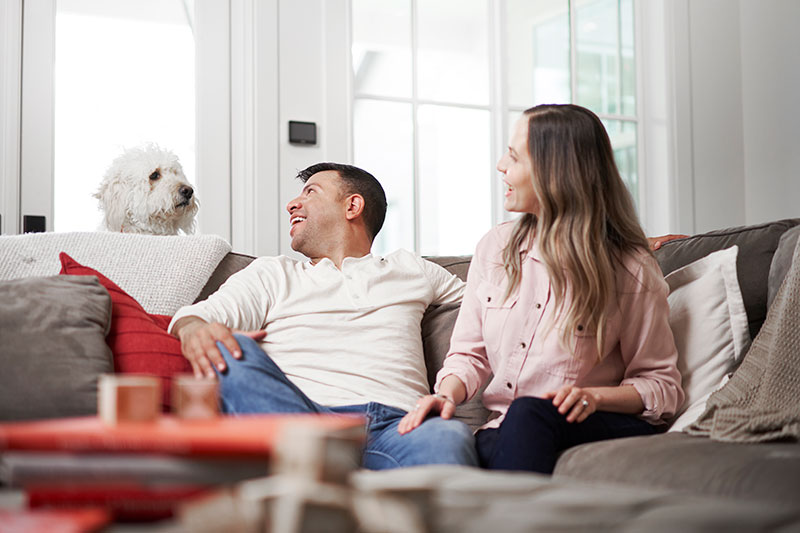
We spend a good majority of our time in our homes. In fact, the Environmental Protection Agency (EPA) has approximated being indoors comprises 90% of our schedule. Although, the EPA also says your indoor air can be three to five times more polluted than outdoors.
That’s since our homes are firmly sealed to increase energy efficiency. While this is fantastic for your heating and cooling costs, it’s not so fantastic if you’re among the 40% of the population with respiratory allergies.
When outdoors ventilation is restricted, pollutants such as dust and volatile organic compounds (VOCs) might get stuck. As a consequence, these pollutants may worsen your allergies.
You can enhance your indoor air quality with fresh air and routine dusting and vacuuming. But if you’re still having issues with symptoms while you’re at your residence, an air purifier might be able to help.
While it can’t eliminate pollutants that have gotten trapped in your furniture or flooring, it could help freshen the air circulating across your residence.
And air purification has also been scientifically confirmed to help lower some allergic symptoms, according to the American College of Allergy, Asthma and Immunology. It could also be appropriate if you or a loved one has lung trouble, such as emphysema or COPD.
There are two options, a portable air purifier or a whole-home air purifier. We’ll discuss the advantages so you can figure out what’s right for your home.
Whole-House Air Purifier vs. Portable Air Purifiers
A portable air purifier is for a lone room. A whole-house air purifier accompanies your heating and cooling unit to clean your complete house. Some kinds can work on their own when your heating and cooling system isn’t operating.
What’s the Best Air Purifier for Allergies?
Go after an option with a High Efficiency Particulate Air (HEPA) filter. HEPA filters are installed in hospitals and deliver the greatest filtration you can buy, as they eliminate 99.97% of particles in the air.
HEPA filters are even more useful when used with an ultraviolet (UV) germicidal light. This powerful combination can wipe out dust, dander, pollen and mold, all of which are common allergens. For the best in air purification, think over equipment that also has a carbon-based filter to decrease household odors.
Avoid buying an air purifier that makes ozone, which is the top element in smog. The EPA warns ozone could irritate respiratory issues, even when released at small concentrations.
The Allergy and Asthma Foundation of America has compiled a listing of questions to ask when buying an air purifier.
- What can this purifier remove from the air? What doesn’t it take out?
- What’s its clean air delivery rate? (A bigger figure means air will be freshened faster.)
- How regularly does the filter or UV bulb need to be switched]? Can I do that by myself?
- How much do new filters or bulbs cost?
How to Reduce Seasonal Allergy Symptoms
Want to have the {top|most excellent|best] performance from your new air purification unit? The Mayo Clinic suggests doing other steps to decrease your exposure to things that can trigger seasonal allergies.
- Stay indoors and keep windows and doors closed when pollen counts are high.
- Have someone else trim the lawn or pull weeds, since this work can worsen symptoms. If you have to do this work yourself, consider wearing a pollen mask. You should also bathe right away and put on clean clothes once you’re completed.
- Avoid stringing up laundry outside your home.
- Run the AC while at home or while driving. Consider installing a high efficiency air filter in your house’s home comfort system.
- Balance your house’s humidity saturation with a whole-house dehumidifier.
- Hardwood, tile or linoleum are the ideal flooring kinds for reducing indoor allergens. If your home has carpet, add a HEPA filter on your vacuum cleaner.
Let Our Professionals Manage Your Indoor Air Quality Necessities
Prepared to progress with adding a whole-house air purifier? Give our specialists a call at 954-320-7398 or contact us online to request an appointment. We’ll help you find the right system for your family and budget.



